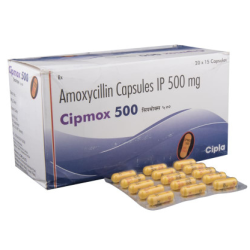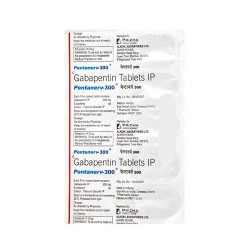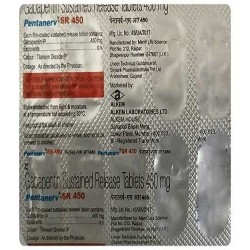Almox 500

- Stock: In Stock
- Brand: Alkem Lab Ltd
- Model: Almox 500
- SKU: ALMX500
- Active Ingredient: Amoxycillin
- Treatment: Infections
- Alcohol: Do not drink
Available Options
Introduction to Almox 500
Almox 500 is a brand name for a medication containing amoxicillin, a broad-spectrum antibiotic. This means it fights a wide variety of bacteria that can cause infections.
Here's a quick rundown of Almox 500:
Uses: Treats various bacterial infections including those of the lungs, ears, urinary tract, skin, sinus, gonorrhea, and stomach. It can also help eradicate H. pylori, a type of bacteria contributing to peptic ulcers. (Other infections: It is used for dental infections, typhoid fever, and some blood, bone, and joint infections.)
How it works: By stopping the growth and multiplication of bacteria.
Dosage: Almox 500 is taken orally, typically with or without food. Your doctor will determine the dose and duration of treatment.
Overview of Active Ingredient of Almox 500mg
The active ingredient in Almox 500mg is amoxicillin, a penicillin-type antibiotic. Amoxicillin works by stopping the growth of bacteria. It is important to note that amoxicillin will not work for viral infections such as the common cold or flu. Taking antibiotics when not needed can contribute to the growth of antibiotic-resistant bacteria.
Understanding Bacterial Infections
Bacterial infections are illnesses caused by the rapid reproduction of bacteria in your body. Bacteria are single-celled organisms that can be helpful or harmful. Our bodies are teeming with both beneficial and harmful bacteria, but trouble arises when harmful bacteria multiply too quickly and overwhelm our immune system's ability to fight them off.
How do you get a bacterial infection:
- Through breaks in the skin: Cuts, scrapes, and surgical wounds provide entry points for bacteria.
- Contaminated food or water: Consuming food or beverages harboring harmful bacteria can lead to infection.
- Respiratory droplets: When an infected person coughs or sneezes, they expel respiratory droplets containing bacteria that can be inhaled by others.
- Direct contact: Physical contact with an infected person or animal, or contaminated surfaces, can spread bacteria.
- Sexual contact: Certain bacterial infections, like sexually transmitted infections (STIs), are transmitted through sexual contact.
Almox 500 works because its active ingredient, amoxicillin, disrupts the cell wall of bacteria.
How Almox 500 Works
- Targeting Bacteria: Amoxicillin is a penicillin-type antibiotic, and its target is specifically bacteria, not viruses. This is important because antibiotics won't help with the common cold or flu, which are viral infections.
- Cell Wall Interference: Bacteria have a cell wall surrounding their membrane, providing structure and protection. Amoxicillin works by interfering with the process of building this cell wall.
- Keyhole Blockage: During cell wall construction, bacteria use enzymes to create a sort of "keyhole" structure. Amoxicillin binds to these enzymes, essentially acting like a plug and preventing the keyhole from forming.
- Weakened Defense: The bacteria become fragile without a properly formed cell wall. They can no longer effectively defend themselves and are more susceptible to bursting or being destroyed by the body's immune system.
Combating Infection: By stopping the growth and killing bacteria, amoxicillin helps the body fight off the infection.
Amoxicillin for Treating Upper Respiratory Tract Infections
Amoxicillin is generally not the most effective treatment for upper respiratory tract infections (URTIs) because most URTIs are caused by viruses. Antibiotics like amoxicillin only target bacteria, not viruses.
Amoxicillin isn't typically used for URTIs:
- Viral origin: The vast majority of URTIs, including the common cold, are caused by viruses. Amoxicillin is ineffective against viruses.
- Antibiotic resistance: Overusing antibiotics for viral infections can contribute to antibiotic resistance. This is a significant public health concern, making it even more important to reserve antibiotics for bacterial infections.
Amoxicillin might be used for URTIs:
- Bacterial complications: If a bacterial infection develops as a complication of a viral URTI, such as acute bacterial paranasal sinuses, throat, and ear infection amoxicillin can be effective.
- Diagnosis uncertainty: In some cases, it can be difficult to distinguish between a viral and bacterial URTI initially. If there's a chance it might be bacterial, a doctor may prescribe amoxicillin while waiting for test results.
Almox 500 Treating paranasal sinuses
Paranasal Sinuses:
These are the four air-filled cavities located in the facial bones around the nose. They include the maxillary sinuses (located in the upper jaw on each side of the nose), frontal sinuses (located in the forehead above the eyebrows), ethmoid sinuses (located between the eyes behind the bridge of the nose), and sphenoid sinus (located behind the ethmoid sinuses, deep within the skull).
Amoxicillin (Almox 500):
Amoxicillin is an antibiotic and only effective against bacterial infections. Many sinus infections are viral, and amoxicillin wouldn't help in those cases. Taking antibiotics for viral infections can contribute to antibiotic resistance, making them less effective in the future.
Almox 500 Treating Throat Infection
This is a broad term for any infection affecting the throat, causing symptoms like sore throat, difficulty swallowing, and scratchiness.
- Tonsillitis: Inflammation of the tonsils, the two soft tissues at the back of your throat. Symptoms include sore throat, difficulty swallowing, swollen lymph nodes in the neck, and fever. It can be caused by viruses or bacteria.
- Pharyngitis: Inflammation of the pharynx, the general term for the back of your throat. Symptoms are similar to tonsillitis but without tonsil involvement. Pharyngitis is most commonly caused by viruses.
- Laryngitis: Inflammation of the larynx, also known as the voice box. This primarily affects your voice, causing hoarseness, loss of voice, and sometimes a dry cough. Laryngitis is usually caused by viruses, but overuse of your voice or irritants like smoke can also contribute.
Amoxicillin's Role
As an antibiotic, Almox 500 specifically fights bacterial infections. If your throat infection is bacterial, amoxicillin is an effective treatment prescribed by a doctor.
Almox 500 Treating Ear Infections
Ear infections, also known as otitis media, are a common health problem, especially in children. They occur when the middle ear, the air-filled space behind the eardrum, becomes inflamed and filled with fluid.
Types of Ear Infections:
- Acute Otitis Media: This is the most common type of ear infection, causing sudden onset of symptoms. It often occurs after a cold or upper respiratory infection.
- Otitis Media with Effusion (OME): This is fluid buildup in the middle ear that persists for weeks or months after an ear infection or even without a prior infection.
- Chronic Otitis Media: This is a long-term infection of the middle ear that lasts for 3 months or more, often with repeated episodes of acute infection.
Almox 500 Might Be Used:
If bacteria cause your ear infection, amoxicillin is a very effective treatment a doctor prescribes.
Almox 500 Treating skincare
Almox 500 (Amoxicillin) can be effective in treating some skin infections, including those you mentioned:
- Cellulitis: This deeper skin infection can benefit from Amoxicillin, especially if caused by susceptible bacteria.
- Impetigo: This contagious blister-like infection often responds well to Amoxicillin.
- Infected wounds: Amoxicillin can help fight bacterial infections in wounds, but proper wound cleaning and dressing are also crucial.
Diagnosis and Treatment:
Accurate Diagnosis: A doctor can diagnose the specific cause of your skin issue. If it's not a bacterial infection, Almox 500 won't be effective and other treatments might be needed.
Prescription and Dosage: Almox 500 is a prescription medication. The doctor will determine the appropriate dosage and duration of treatment based on your specific infection.
Antibiotic Resistance: Overusing or misusing antibiotics can lead to resistance. A doctor can help prevent this by prescribing the right antibiotic and ensuring you complete the full course.
Not used for :-
- Fungus, Viral skin infection
- Eczema or Shingles
Dosage and Administration of Almox 500
Dosage: The dosage of Almox 500 (amoxicillin) can vary depending on the condition being treated, the severity of the infection, and the patient's age and weight. However, a common dosage regimen for adults and children over 40 kg (about 88 lbs) is:
For mild to moderate infections: 500 mg orally every 8 hours.
For severe infections: Higher doses may be necessary under the guidance of a healthcare provider.
Administration: Amoxicillin is usually taken orally (by mouth) with a full glass of water. It can be taken with or without food. The tablets should be swallowed whole without crushing or chewing.
Potential Side Effects of Almox 500
Common Side Effects:
Digestive Issues: These are the most frequent side effects and might include diarrhea, nausea, vomiting, stomach pain, and indigestion. To minimize these, take amoxicillin with food.
Rash: A skin rash can occur, especially in people with allergies to penicillin or cephalosporin antibiotics.
Yeast Infection: Antibiotics can disrupt the balance of good and bad bacteria in the body, potentially leading to a yeast infection (thrush). This is more common in women and people with weakened immune systems.
Less Common Side Effects:
Headache: Headaches can occur in some individuals taking amoxicillin.
Fatigue: Feeling tired or fatigued might be a side effect.
Allergic Reaction: In rare cases, a severe allergic reaction (anaphylaxis) can occur. Symptoms include trouble breathing, wheezing, hives, and swelling of the face, lips, or tongue. Seek immediate medical attention if you experience these.
FAQs About Almox 500
Q.1 What is Almox 500 used for?
Almox 500 (amoxicillin) is used to treat various bacterial infections, including respiratory tract infections, ear infections, sinus infections, urinary tract infections (UTIs), and skin infections.
Q.2 How should Almox 500 be taken?
Almox 500 tablets should be taken orally with a full glass of water. They can be taken with or without food. It's important to swallow the tablets whole without crushing or chewing them.
Q.3 What should I do if I miss a dose of Almox 500?
If you miss a dose, take it as soon as you remember. However, if it's almost time for your next dose, skip the missed dose and continue with your regular dosing schedule. Do not double the dose to make up for a missed one.
Q.4 How long should I take Almox 500?
The duration of treatment with Almox 500 varies depending on the type and severity of the infection. Typically, courses range from 5 to 14 days. It's important to complete the full course of antibiotics as prescribed by your healthcare provider, even if you start feeling better before finishing the medication.
Q.5 Can Almox 500 be taken during pregnancy or breastfeeding?
Amoxicillin is generally considered safe to use during pregnancy and breastfeeding when prescribed by a healthcare provider. However, always inform your doctor if you are pregnant, planning to become pregnant, or breastfeeding before starting any medication.
Q.6 What should I do if I have an allergic reaction to Almox 500?
If you experience signs of an allergic reaction such as rash, itching, swelling, dizziness, or difficulty breathing, seek immediate medical attention or call emergency services. Allergic reactions to antibiotics can be serious and require prompt treatment.




